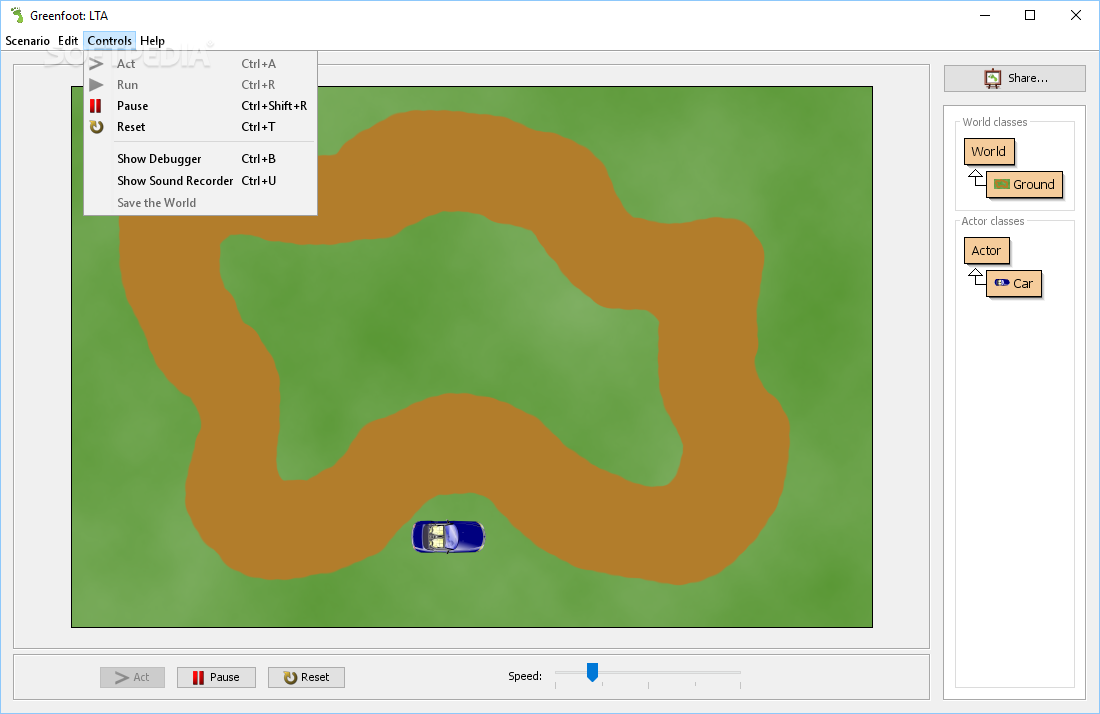

- #Greenfoot score counter how to#
- #Greenfoot score counter pdf#
- #Greenfoot score counter install#
- #Greenfoot score counter update#
In the Level2 class (a subclass of World), you could then have a constructor:
#Greenfoot score counter install#
tWorld (new Level2(this)) // create new world, install it, and pass myself into it GetWorld().removeActor(this) // leave the current world For example, if a game character wanted to move to Level 2 (a second world), and the character object should really move across, so that state is preserved, you could write (in the player actor): (Other worlds are not in the same plane – they are not to the right or below the current one, they are completely disconnected).Īctors can be transferred into another world just by passing a reference to the actor into the world, and adding it.

But they cannot transfer into other worlds this way. Actors can then go out of the screen (becoming invisible to the user) and come back at later stage.

#Greenfoot score counter pdf#
The accessories tab includes a PDF viewer and a calculator, as well as a text editor and an SD card. Cheap early-out if it's not time to spawn a wave yet.No, the ‘bounded’ flag just removes the world size bounds, essentially making worlds infinite size. On C-Ray, it earned a moderate score of 561.26. or at a coarser frequency if you prefer, since it changes state infrequently. Love the game but it seems that the game itself is moving cards for me last week. Call this periodically, say once per frame update, 4 move counter on screen New 3 I cannot move more than one card at a time, even when they are same suit and in numerical order New 3 Hint button New 3 Placement of 'New Game' New 2 Scores New 2 Free Cell. HP bar, score counter, heart tracking and music integration. NextWaveSpawnTime = System.nanoTime() + 1000000000 It had to be coded in a program called Greenfoot and published to the GreenFoot website. declare variable counter to increment score with each collision private int counter 0.
#Greenfoot score counter how to#
That might look something like this: // Call this at the start of your level. How to manage scoring and inventory in Greenfoot This handout. Instead, what you really want to do is call this function periodically, and each time check if it's time to spawn a new wave, rather than hold the CPU hostage until it's time. Watch on YouTube: The Counter class will appear in the Actor classes list. Select Edit in the main Greenfoot window then 'Import Class.' and choose Counter. So, don't put a wait loop inside your game loop. Import the Counter The counter class can be imported into your Greenfoot world. import import import import import import import import. i is still less than 3, so we're stil not allowing the CPU to move on yet! Back to step 3 we go, and burn another second doing nothing. To do this though, I need to add extra space on the window to allow room for the score counter, but I cant find where to do that in my code. We hit the end of the while loop and check the condition again. Select Edit in the main Greenfoot window then Import Class. You've effectively stalled your game here.įinally, an eternity of wasted CPU time later, we've managed to burn a second of time and our inner if condition finally passes. Import the Counter The counter class can be imported into your Greenfoot world.
#Greenfoot score counter update#
This is called a " busy-wait" or "spinning" - the processor is kept busy checking the clock then looping then re-checking the clock, so it's never allowed to exit this loop, return from this function, update the rest of your game state, process player input, or draw a frame. We keep doing this BILLIONS of times, because we do so little work inside the loop each time, nanoTime isn't much bigger each time we loop around. i is still less than 3, so we re-enter the loop and go back to step 3. We hit the end of the while loop, and check the condition again. We check if the current time is 1 second later than begin time yet, but of course it isn't! We've barely executed two instructions since begin time. We check the while loop's condition, and i is indeed less than 3, so we enter the loop. Let's walk through this code, pretending that nanoTime = 0 at the start for simplicity.


 0 kommentar(er)
0 kommentar(er)
